Five Technology Trends Driving New Connector Designs
The connector world is constantly evolving to support dynamic market trends. Emerging high-speed connectivity products are currently responding to a number of technology trends and, once released to market, will serve, inspire, and enable a multitude of next-gen, high-speed applications for many years to come.
As businesses and consumers demand more convenience, mobility, power, and speed from the devices we use, design engineers require more from the connectivity solutions they employ to push these devices to the next level. More powerful, versatile, and innovative connectors are becoming available to serve these designs. Many factors are fueling the growth of the electronics industry, but the five key technology trends that follow will have an especially strong influence on new connector design and development in the years to come.

Technology Trend #1: High-speed connectivity solutions will support 5G networks and faster, ultra-high-bandwidth, lower latency signals.
As 5G networks continue to roll out, high-speed connectors and cables are needed to support this infrastructure and the substantially higher data rates it will carry. Powerful new technologies will be made possible by this instantaneous connectivity. Network equipment and remote radio and active antenna systems will bear the brunt of this activity. The promise of high-speed connectivity will have an especially profound impact on markets such as automotive, transportation, and test and measurement. The connector industry has been ahead of this demand, and several companies have already developed next-gen high-speed solutions.
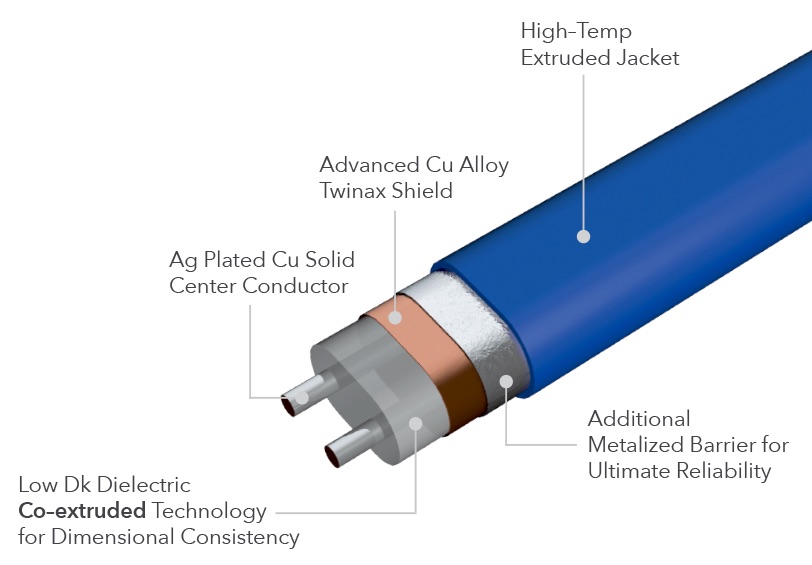
Samtec’s co-extruded Eye Speed® ultra-low-skew twinax cable technology reduces the performance limitations and inconsistencies of individually extruded dielectric twinax cabling, with improved signal integrity, bandwidth, and reach for high-performance system architectures.
Samtec has a range of interconnect solutions that feature vertically integrated high-speed connectors combined with high-performance micro-coaxial cable. The company manufactures its own unique cable products at Samtec Cable in Wilsonville, Oregon.

Samtec’s Flyover® QSFP28 cable systems provide improved signal integrity and architectural flexibility by routing critical high-speed signals through low-loss, ultra–low–skew twinax cable, instead of through expensive, lossy PCBs. Their ultra-high-density design includes sideband signaling via press-fit contacts to help increase airflow, and a multitude of options allow for maximum design flexibility.
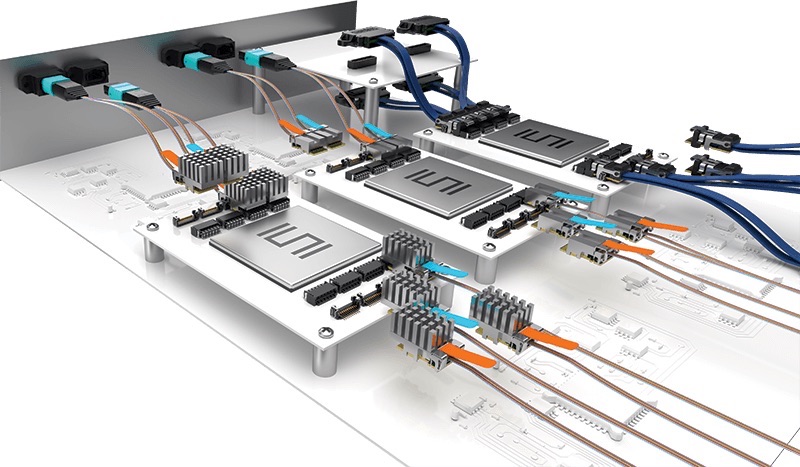
Samtec’s FireFly™ Micro Flyover System™ is an inside-the-box, mid-board optics interconnect solution with performance to 28Gb/s and a future path to 56Gb/s. It is designed to allow copper or fiber optics to use the same high-performance connector system.
Technology Trend #2: Magnetic, LED, vibration, and combination user-recognition mating systems are changing the way connectors come together.
For many years, users have relied on tactile and audible mating cues to indicate positive connector engagement. Some of the latest interconnect solutions are taking this to a new level with magnetic, LED, or vibration features, or combinations of technologies designed to assure users that they have achieved a secure, properly mated coupling. This is especially critical in difficult-to-reach architectures and high-reliability applications including medical, military, and aerospace applications.
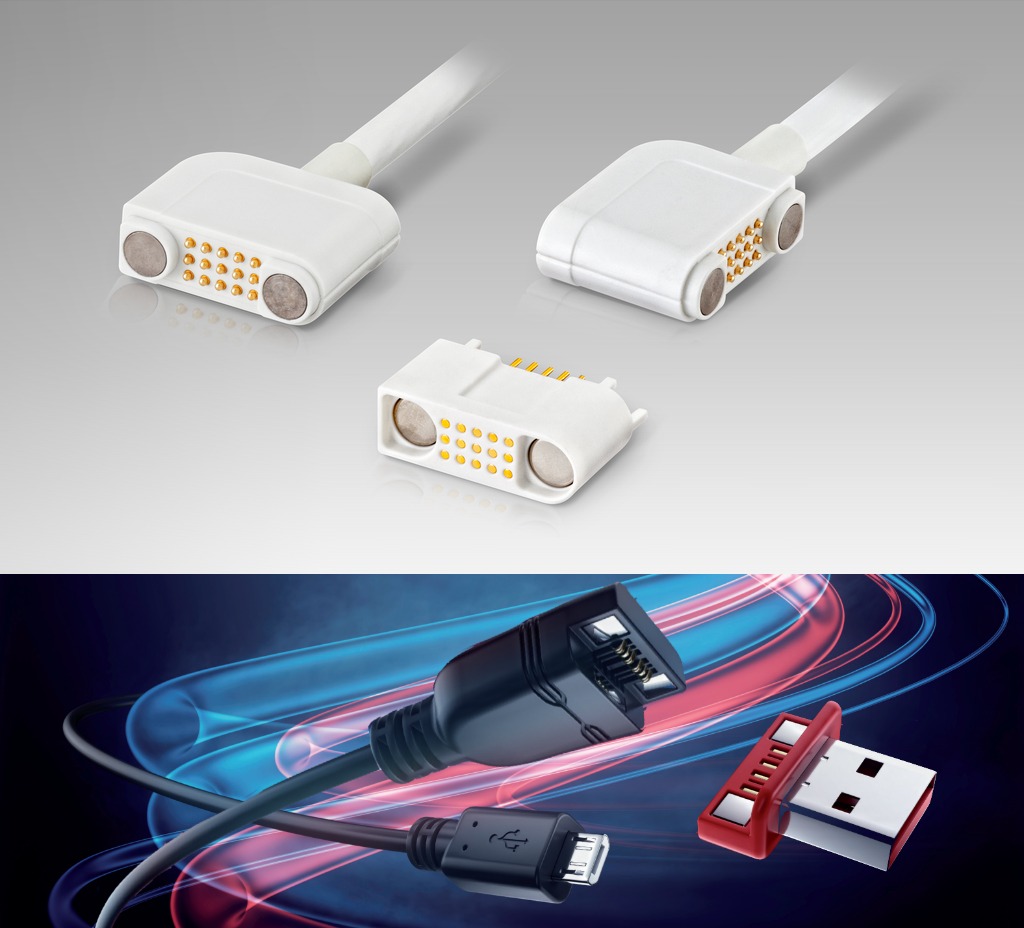
Rosenberger’s MultiMag Series connectors are designed for compact applications with high mating cycles and cable safety demands. These magnetic self-mating connectors provide a secure connection with little effort and safely breakaway if subjected to acute tensile force. Variants include MultiMag 15 (top) for general power and data transmission MultiMag 6 (bottom)for USB applications.
Rosenberger’s MultiMag connectors feature a breakaway function designed to disconnect should the plug or cable be subjected to acute tensile force. This disconnection capability avoids the risk of injury to the user, as well as inadvertent device or connector damage. MultiMag connectors are ideal for environments and devices where frequent connection and disconnection are prerequisite, such as medical and industrial automation equipment. They are also ideal for drones, robots, smart watches, and smart eyewear.
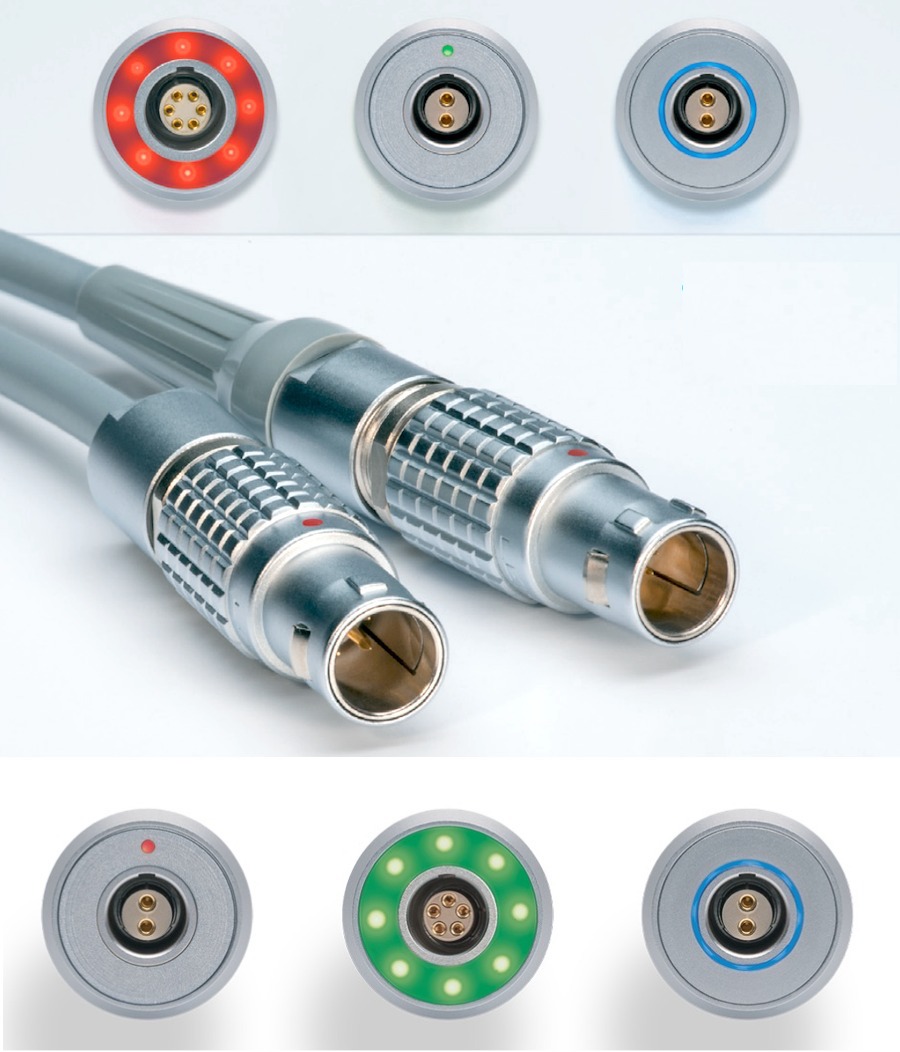
LEMO’s HALO LED connectors have an LED–lighted flange that visually confirms connector mating engagement. HALO LED technology can be packaged within the LEMO’s B and T Series push-pull metal circular connectors.
LEMO’s HALO connectors have an LED-illuminated flange that clearly displays the connection status, alerting users to connection issues or providing unmistakable visual confirmation of securely mated connectors. These connectors have a circular array of LEDs positioned on the connector flange. These LEDs are available in white, red, green, and blue to provide additional distinction in complex cable arrays, and design engineers can specify up to two different colors.
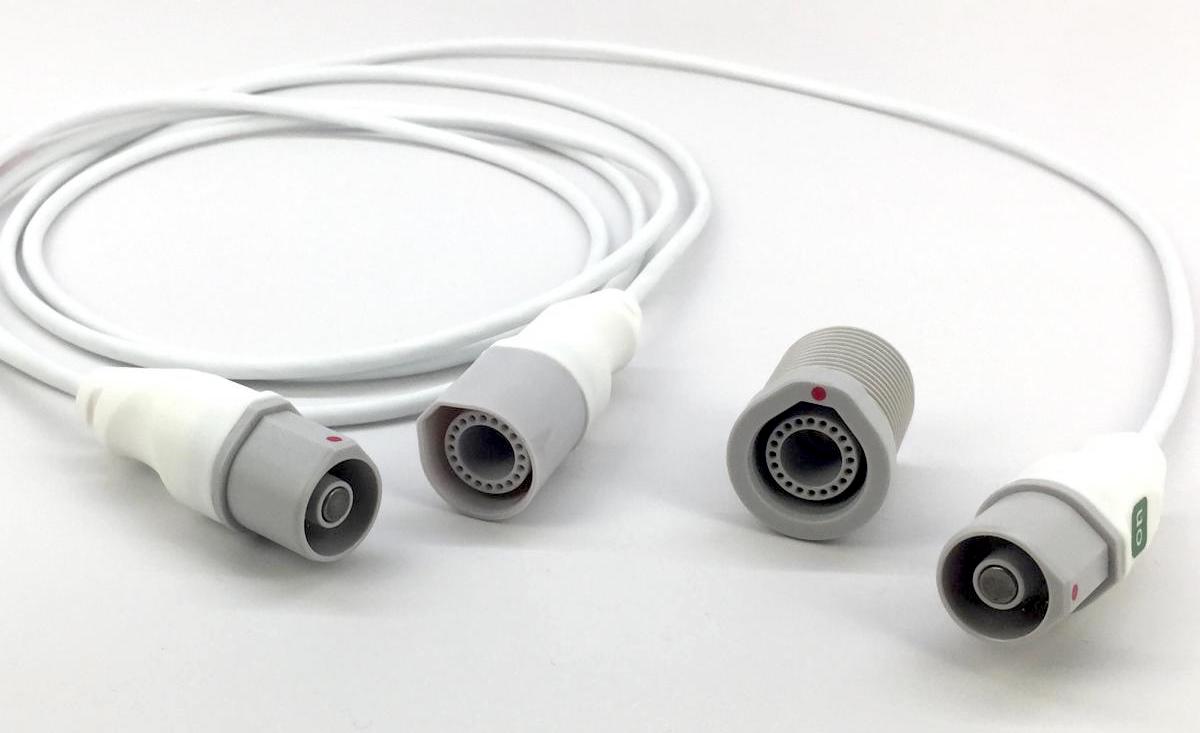
This Magnetic Medical Connector System from Onanon, an Amphenol company, features a magnetic pole that enables easy and intuitive mating and unmating, as well as LED-illuminated receptacles that shine red in the unmated condition and green in the mated condition and also vibrate when mated to provide visual, tactile, and audible confirmation of proper connections.
Technology Trend #3: Miniaturized connectors and high-density contacts conserve space and weight to support prevailing cross-market trends towards portability and wearability.
Trends favoring portability, mobility, and wearable devices continue to influence every market. To make these compact designs possible, connector suppliers are delivering miniaturized form factors with higher contact densities. The latest generation of connectivity products conserves space and reduces weight without compromising functionality. This trend has fueled a boom in wearable devices, which has brought great flexibility and more user-friendly designs to medical, consumer, and military markets.
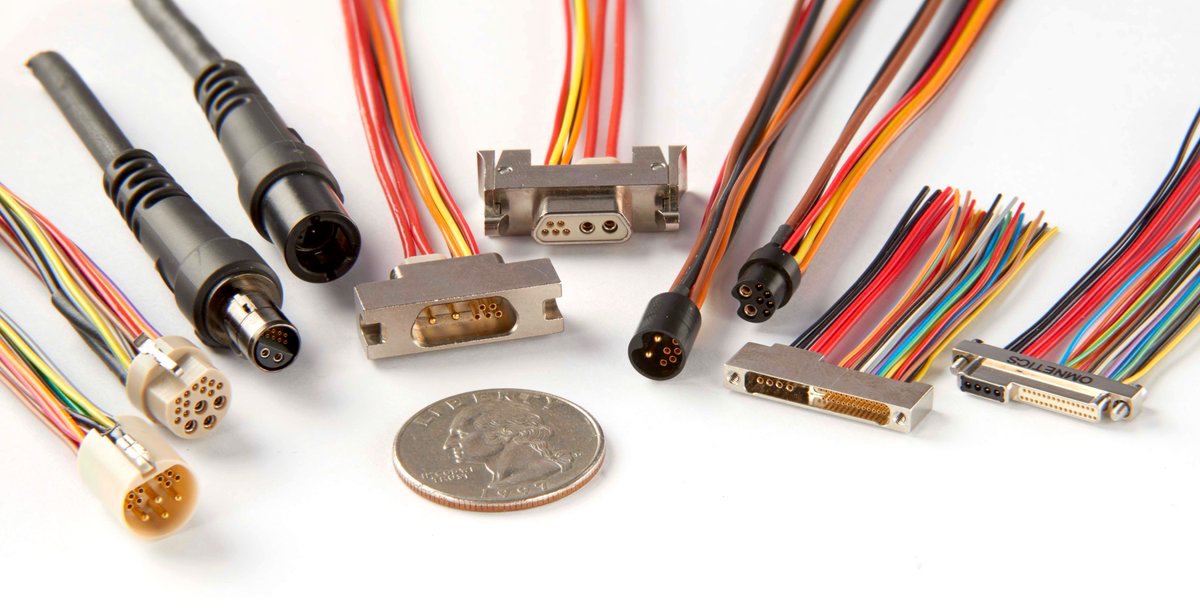
Omnetics Connector Corporation’s connectors and cable assemblies are known for their small size, light weight, durability, and reliability in tough environments.
Omnetics Connector Corporation designs and manufactures standard, custom, and application-specific micro and nano connectors and cable assemblies for devices where miniaturization is desirable. Omnetics’ expertise lies in providing connectivity solutions for applications that operate in rigorous environmental conditions, such as mission-critical medical, industrial, military, defense, and aerospace applications. EMI shielding, IP sealing, polarization, and rugged materials in miniaturized package sizes serve designers working in these complex markets.
Mill-Max Mfg. Corp. is another company that delivers small, precise connectors for applications that need to conserve size and weight while delivering high levels of power and data. As military, aerospace, medical, and other high-reliability markets continue to scale down existing equipment and innovate new products, versatile connectors will be needed to make these designs possible.
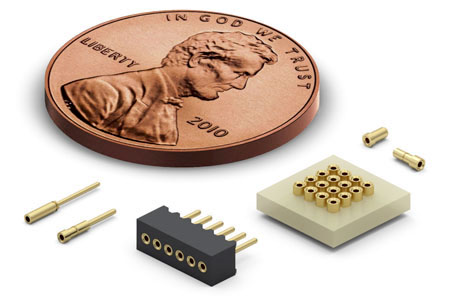
Mill-Max offers four diverse, off-the-shelf Turned PCB Pin Sockets designed for fine-pitch applications that require miniature receptacles. Each receptacle contains three-finger beryllium copper contacts that range from 0.008” (0.2mm) to 0.013″ (0.33mm) in diameter and are suitable for use in high-density configurations down to a 1mm pitch. These contacts are also characterized by a low insertion force that makes them compatible with miniature leads subject to bending.
Fischer Connectors and Wearin’, Fischer’s new spin-off, work collaboratively to design and develop wearable connectivity solutions for the connected human. Wearin’ vests are currently available in defense and industrial versions, both of which utilize Fischer’s small, lightweight connectivity solutions for IoT devices to integrate sensors, cameras, batteries, switches, hubs, and communication devices such as GPS and tactical computers into a functional garment. These vests can transmit and receive critical situational information and utilize AI data analysis to enhance the performance and safety of the person wearing it.

The Wearin’ Defense (left) and Wearin’ Industrial (right) vests helps keep soldiers, security personnel, and workers safe in military, defense, and industrial environments ranging from battlefields to factories. These hands-free garments serve as protective devices with the integration of sensors that collect data and deliver to the cloud for analysis.
Technology Trend #4: More than just power, wireless charging headwinds create adoption tailwinds.
Wireless power transfer is the transmission of electrical energy without traditional plug-and-play connectors and is designed to increase the mobility, convenience, and safety of electronic devices. Wireless charging has emerged as a popular feature for smartphones, earbuds, fitness bands, handheld computers, and other devices. It is also emerging for electric vehicles. Initially, designers were drawn to the convenience and interoperability that wireless charging can provide to users, but now engineers explore this technology with an eye towards eliminating some traditional mechanical connectors.
Near-field communication (NFC) is the newest entrant for wireless power standards, and its potential is massive. With an installed base of billions of devices, NFC has traditionally been used as a communications platform. However, the NFC Forum standards body turned on a small amount of power transfer (~0.5 watts received) as part of its protocol. This creates new opportunities for wireless charging in a variety of small, space-constrained devices. Some of the initial products rolling out with this method of wireless power transfer include Samsung’s Galaxy Fit and Huawei’s Gentle Monster smart glasses. For this technology to take off, the amount of power received will need to increase while keeping NFC data transfer rates in the 108–848Kb/s range.
“We’re seeing a number of applications where connectors are being eliminated as a result of adding wireless charging,” said Rob Diebold, global director of sales at NuCurrent, who previously served in a corporate venture role at Molex, where he made early investments in wireless power companies based on their disruptive potential. “NFC wireless charging introduces possibilities to eliminating connectors in a variety of product categories and markets.”
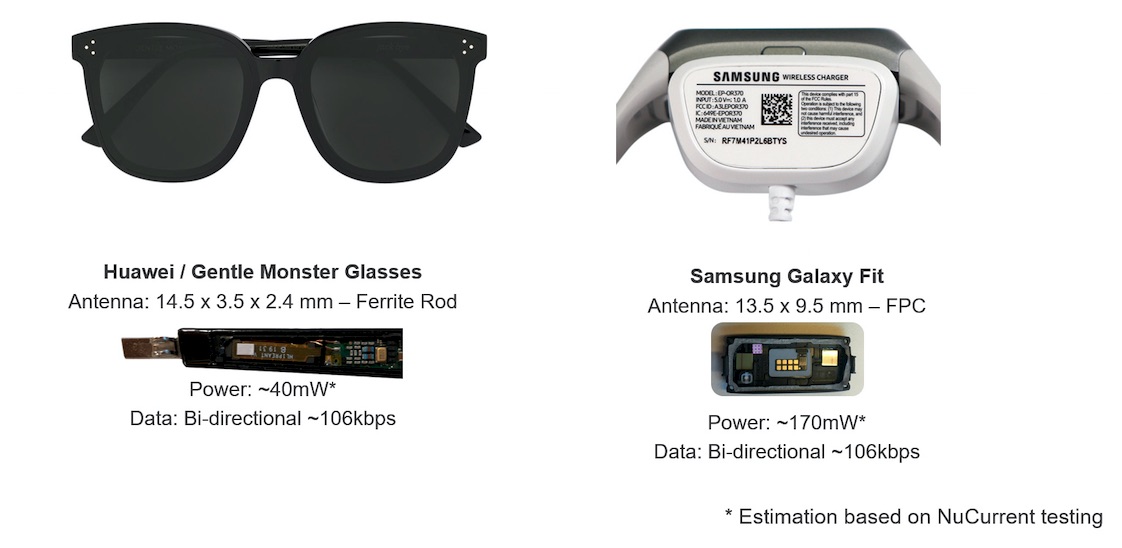
NuCurrent has created inductive charging technology based on a proprietary NFC extension. The technology enables up to 3W of power (with plans for 5 watts) received while simultaneously supporting data transfer rates at 108Kb/s and up and enables products such as smart glasses and smart watches to charge wirelessly.
Technology Trend #5: As adoption of electric vehicles trend upward, EV connectivity solutions are increasing.
As the world shifts towards greener energy, the adoption of wireless charging technologies is set to continue. How energy is captured, stored, consumed, and delivered is of increased importance to consumers. This trend continues to create opportunities for power charging connectors and emerging wireless charging technologies. Wireless charging could disrupt the EV charging connector market, but it’s also likely to drive EV adoption.
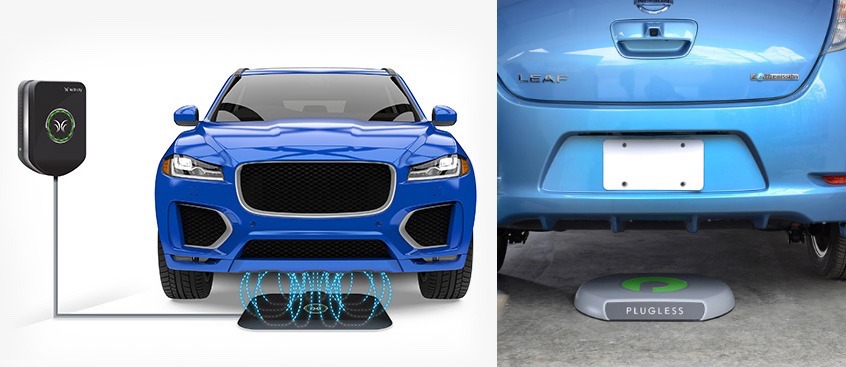
WiTricity’s wireless vehicle charging technology (left) uses magnetic resonators and NFC to efficiently transfer power over large distances and is primarily designed for small to mid-size commercial vehicles. PLUGLESS (right) has also developed wireless charging technologies currently compatible with the Tesla Model S, BWM I3, Nissan Leaf, and Gen 1 Chevy Volt.
While wireless charging technologies may be disruptive to plug-and-play charging stations, they will create other power connector and cable opportunities. In addition, the convenience of wireless charging could likely serve as a catalyst for widespread EV adoption.
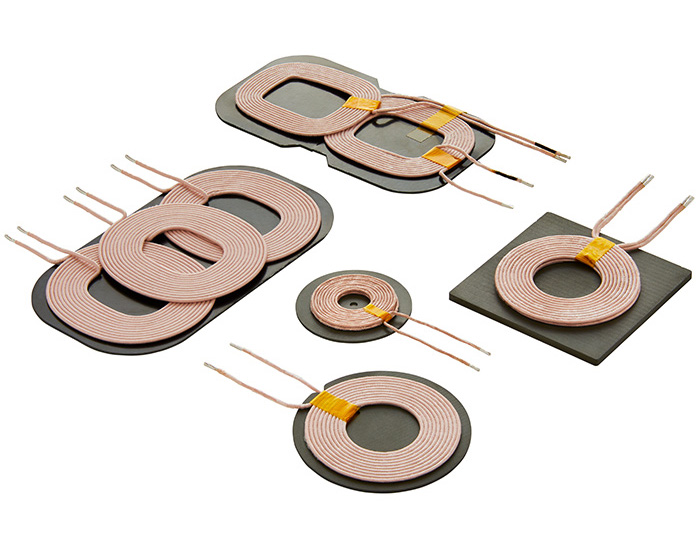
Bel Fuse offers Multiple Coil Wireless Charging Coils (WCC) in double and triple winding configurations. The Multiple Coil WCC Series allows power to be transferred wirelessly through inductive coupling and can be used to charge in-vehicle devices like navigation aids, as well as smartphones, gaming devices, wearable medical devices, robotic cleaners, and unmanned aerial vehicles.
As today’s already-densely connected technologies continue to evolve, creative engineers will continue to develop innovative connectivity products that effectively and reliably overcome new challenges and, in turn, often themselves inspire new design opportunities. We expect the five technology trends addressed here to inspire exciting new products in every market in the coming years.





